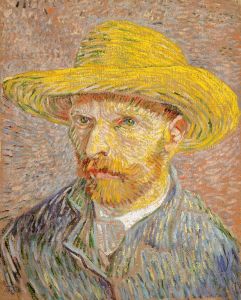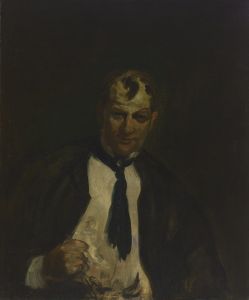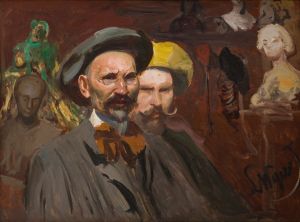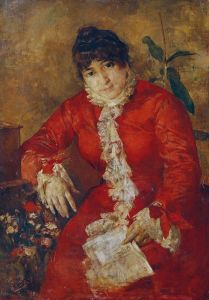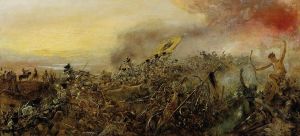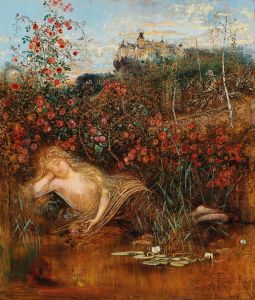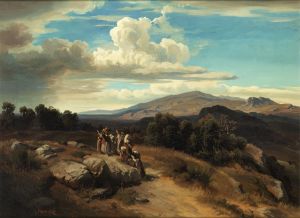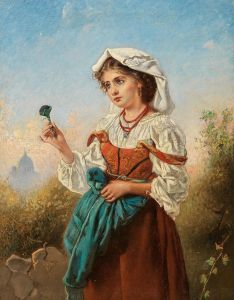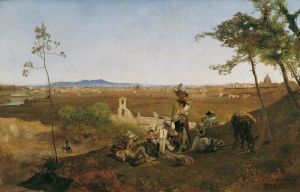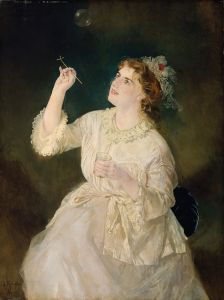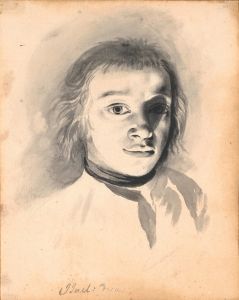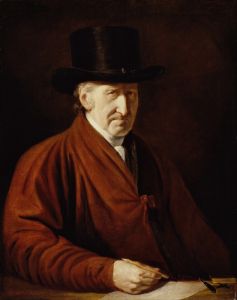
Bildnis des Malers Berthold Winder
A hand-painted replica of Anton Romako’s masterpiece Bildnis des Malers Berthold Winder, meticulously crafted by professional artists to capture the true essence of the original. Each piece is created with museum-quality canvas and rare mineral pigments, carefully painted by experienced artists with delicate brushstrokes and rich, layered colors to perfectly recreate the texture of the original artwork. Unlike machine-printed reproductions, this hand-painted version brings the painting to life, infused with the artist’s emotions and skill in every stroke. Whether for personal collection or home decoration, it instantly elevates the artistic atmosphere of any space.
Anton Romako's painting Bildnis des Malers Berthold Winder (Portrait of the Painter Berthold Winder) is a work created by the Austrian artist Anton Romako (1832–1889). Romako was a notable figure in 19th-century Austrian art, known for his distinctive style that bridged traditional academic painting and the emerging modernist tendencies of his time. This portrait is one of his lesser-known works, yet it reflects his skill in capturing the psychological depth of his subjects.
The painting depicts Berthold Winder, a fellow artist, whose life and career remain relatively obscure in art historical records. Romako's portrayal of Winder is characterized by a focus on the sitter's facial expression and demeanor, offering insight into his personality. The composition is intimate, with Winder shown in a seated pose, dressed in contemporary attire, and gazing directly at the viewer. The background is kept simple, ensuring that the focus remains on the subject.
Romako's technique in this work demonstrates his departure from the rigid formalism of academic portraiture. His brushwork is looser and more expressive, a hallmark of his mature style. The use of light and shadow in the painting adds depth and dimension, while the muted color palette creates a subdued, introspective atmosphere.
Anton Romako's career was marked by both critical acclaim and personal struggles. He studied under prominent artists in Vienna, Munich, and Rome, and his work often reflected a blend of influences from these artistic centers. Despite his talent, Romako faced financial difficulties and struggled to gain widespread recognition during his lifetime. It was only in the 20th century that his work began to be reevaluated and appreciated for its innovative qualities.
As for Bildnis des Malers Berthold Winder, specific details about its creation, provenance, and current location are not widely documented. The painting is an example of Romako's ability to convey the individuality of his subjects, making it a valuable piece within his oeuvre. However, the lack of extensive information about both the sitter and the painting itself limits our understanding of its broader historical and cultural significance.
In summary, Bildnis des Malers Berthold Winder is a testament to Anton Romako's talent as a portraitist and his ability to capture the essence of his subjects. While details about the painting and its subject remain scarce, it contributes to the legacy of an artist whose work continues to intrigue and inspire.







